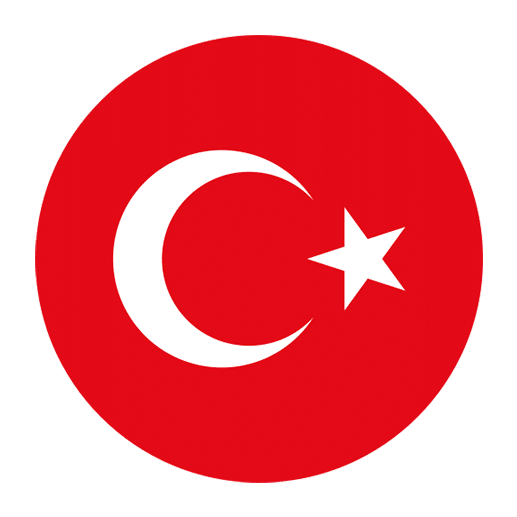Learning Turkish opens up a fascinating world of rich culture, history, and people. One of the essential components of mastering any language is understanding how to form questions. Interrogative sentences in Turkish grammar, while different from those in English, are not overly complex once you grasp their structure and usage. This article aims to provide a comprehensive guide to forming and using interrogative sentences in Turkish, making your language learning journey smoother and more enjoyable.
Understanding Interrogative Sentences
Interrogative sentences are used to ask questions. In English, we often start these sentences with a question word (who, what, when, where, why, how) or an auxiliary verb (do, does, did). Turkish, however, has its unique way of forming questions. Questions in Turkish can be broadly categorized into two types: Yes/No questions and Wh- questions.
Yes/No Questions
Yes/No questions in Turkish are quite straightforward. They are formed by adding a question particle (mi, mı, mu, mü) to the end of the statement. The choice of particle depends on the vowel harmony rules, which dictate that vowels within a word harmonize to be either front or back vowels, and either rounded or unrounded.
Vowel Harmony Rules:
– For back vowels (a, ı, o, u), use mı or mu.
– For front vowels (e, i, ö, ü), use mi or mü.
The question particle is also affected by the preceding consonant’s voicing. If the preceding consonant is voiced, the particle remains unvoiced, and if the consonant is unvoiced, the particle takes on a voiced form.
Examples:
– Sen öğrenci misin? (Are you a student?)
– O evde mi? (Is he/she at home?)
– Kitabı okudun mu? (Did you read the book?)
– Bu elma mı? (Is this an apple?)
Notice that the question particle follows the subject and the verb, which is different from English where the auxiliary verb typically precedes the subject.
Wh- Questions
Wh- questions in Turkish are formed using specific question words, much like in English. Here are the common Turkish question words and their English equivalents:
– Kim? (Who?)
– Ne? (What?)
– Nerede? (Where?)
– Ne zaman? (When?)
– Neden? (Why?)
– Nasıl? (How?)
– Hangi? (Which?)
These question words usually come at the beginning of the sentence, followed by the subject and the verb.
Examples:
– Kim geldi? (Who came?)
– Ne yapıyorsun? (What are you doing?)
– Nerede oturuyorsun? (Where do you live?)
– Ne zaman gidiyoruz? (When are we going?)
– Neden ağlıyorsun? (Why are you crying?)
– Nasıl geldin? (How did you come?)
– Hangi kitabı okudun? (Which book did you read?)
Question Particles with Wh- Questions
In Turkish, the question particle (mi, mı, mu, mü) can also appear in Wh- questions for emphasis or to seek confirmation. When used this way, it follows the subject and the verb, similar to its usage in Yes/No questions.
Examples:
– Ne zaman gidiyoruz, değil mi? (When are we going, right?)
– Nerede oturuyorsun, biliyor musun? (Do you know where you live?)
Word Order in Turkish Questions
Understanding word order is crucial for forming correct sentences in Turkish. Generally, Turkish follows a Subject-Object-Verb (SOV) order, but this can vary in questions, especially Wh- questions where the question word often leads.
Example:
– Statement: Sen kitabı okudun. (You read the book.)
– Yes/No Question: Kitabı okudun mu? (Did you read the book?)
– Wh- Question: Hangi kitabı okudun? (Which book did you read?)
Notice how the question word “hangi” comes at the beginning of the sentence, pushing the subject and object to follow.
Inverted Questions
In Turkish, sometimes questions can be inverted for emphasis or stylistic reasons. This involves placing the verb at the beginning of the sentence, followed by the subject and then the question particle.
Example:
– Normal: Sen öğrenci misin? (Are you a student?)
– Inverted: Öğrenci misin sen? (Are you a student?)
This inversion often adds a layer of emphasis or urgency to the question.
Politeness and Formality
Politeness and formality are important aspects of Turkish culture and language. When forming questions, especially when addressing elders or people in formal situations, it is crucial to use appropriate language. This often involves using the formal “siz” instead of the informal “sen” and choosing words and particles that convey respect.
Examples:
– Informal: Sen ne yapıyorsun? (What are you doing?)
– Formal: Siz ne yapıyorsunuz? (What are you doing?)
Additionally, using polite expressions and tones can make your questions sound more respectful.
Practice Makes Perfect
The best way to master interrogative sentences in Turkish is through consistent practice. Here are some tips to help you practice effectively:
1. **Daily Conversations**: Try to incorporate Turkish questions into your daily conversations, even if it’s just with yourself. This helps build familiarity and confidence.
2. **Language Exchange**: Partner with a native Turkish speaker for language exchange. Asking questions and receiving answers in real-time can significantly improve your understanding and usage.
3. **Flashcards**: Create flashcards with different question forms and practice them regularly.
4. **Writing Exercises**: Write down various questions and their answers. This helps reinforce the structure and usage.
5. **Listening Practice**: Listen to Turkish podcasts, music, or watch Turkish TV shows and pay attention to how questions are formed and used.
Common Mistakes to Avoid
As with learning any language, it’s easy to make mistakes when forming questions in Turkish. Here are some common pitfalls to watch out for:
1. **Incorrect Question Particle**: Ensure you use the correct question particle that matches the vowel harmony of the preceding word.
2. **Word Order**: Pay attention to the correct word order, especially in Wh- questions.
3. **Formality**: Use the appropriate level of formality based on the context and the person you are addressing.
4. **Clarity**: Make sure your questions are clear and concise to avoid confusion.
Conclusion
Mastering interrogative sentences in Turkish is a critical step in becoming proficient in the language. While there are differences from English, understanding the structure, question particles, and word order can make this aspect of Turkish grammar more approachable. By practicing regularly, being mindful of common mistakes, and engaging with native speakers, you’ll be well on your way to asking questions confidently in Turkish. Happy learning!

